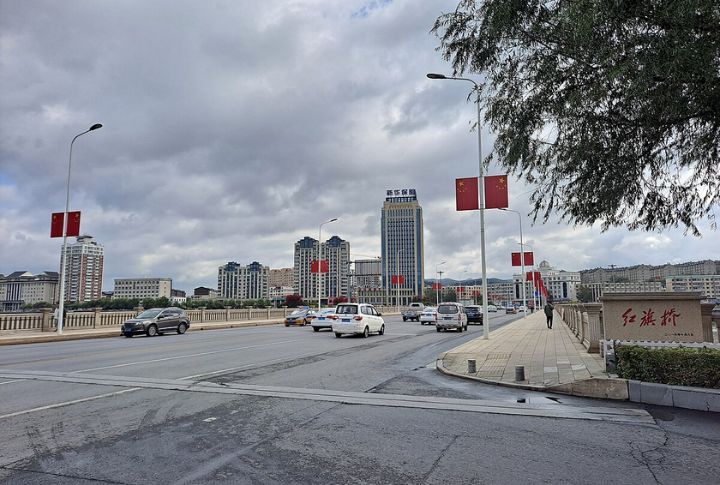
The Hongqi Bridge in Sichuan Province was supposed to stand as proof of China’s infrastructure prowess—a two-lane concrete giant linking remote mountain regions to the G317 national highway, a key route toward Tibet. But only months after it opened, the bridge at a hydropower station in southwest China collapsed, sending massive slabs of concrete and steel plunging into the river below.
Chinese state media confirmed that the collapse occurred around 3 p.m. local time on Tuesday, when a section of the bridge suddenly gave way. Videos circulated on Chinese social media show the structure buckling before vanishing into a cloud of dust that drifted over the river’s surface. Let’s unpack what really happened before this bridge gave way.
Cracks Before The Fall
Just a day before the collapse, cracks were spotted on the bridge’s road surface and on the nearby slope. Local transportation officials noticed signs of deformation on the right-bank slope of the bridge on Monday afternoon and immediately imposed temporary traffic controls. The decision to close the structure came just in time; officials later confirmed no vehicles or pedestrians were on the bridge when it failed.
That early action likely prevented a catastrophe. Local authorities issued public notices warning drivers about potential safety risks while engineers began monitoring the slope. Despite the shutdown, the instability grew worse overnight, leading to the landslide that ultimately brought down the structure.
A Collapse Caught On Camera
Footage shared widely online captured the moment the Hongqi Bridge gave way. The ground near the approach road appeared to shift, and within seconds the entire section crumbled, tumbling into the fast-moving river below. Dust clouds filled the valley as the bridge’s remains disappeared beneath the water.
Local officials later confirmed the collapse and reported no casualties. Emergency crews were dispatched immediately by rerouting traffic and securing the area while engineers and geologists began assessing the damage and monitoring nearby slopes for further movement.
Built Fast, Lost Faster
Completed earlier this year, the 758-meter-long Hongqi Bridge was part of an ambitious national effort to improve connectivity across western China’s rugged lands. It was constructed by the state-backed Sichuan Road & Bridge Group and stood roughly 625 meters above the gorge floor, with piers reaching 172 meters in height. Its design—a cantilevered, two-lane beam bridge—made it one of the taller and more technically demanding spans in the region.
The bridge was intended to support the flow of trade, tourism, and energy development tied to nearby hydropower projects. It was also meant to highlight China’s growing expertise in large-scale infrastructure, especially in areas where weather and terrain test the limits of construction technology.
Instead, its short lifespan (opening and collapsing within the same year) has drawn scrutiny over how fast such projects are being approved and completed.
Questions Without Answers
As of this week, investigations are underway to determine what caused the failure. Early assessments suggest that geological instability and landslide activity may have been contributing factors. Authorities have not released an official cause, and state outlets have avoided linking the collapse to design or construction flaws until the analysis is complete.
Still, the Hongqi Bridge’s sudden failure raises a sobering question about the balance between ambition and caution in large-scale engineering. In a country where infrastructure often symbolizes national pride, this collapse serves as a reminder that even the newest structures can fall prey to nature’s quiet warnings.
